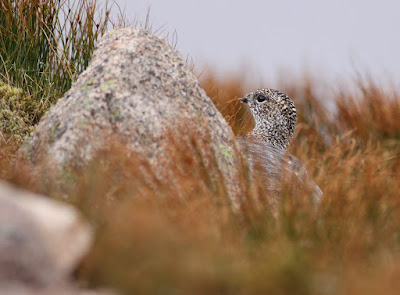Well, the first non-Mexico post finally. I'm sad no longer to be writing about the fantastic birds and sites of Queretaro, and hopefully one day I'll be back to revisit some of these old haunts.
Birding goes on, though, and what better way to start a new chapter than with reports from one of the great birding areas of the UK - the Scottish Highlands. I'm here for a few weeks this summer, and am hoping to catch up with some enigmatic species. May is the best time of year to visit the highlands for birds, but with luck and perseverance, there is always good birds to be found...
I'm starting with reports from two climbs in the Cairngorms. Such days out have a double benefit. There isn't much better than spending a day climbing some of the highest mountains in Britain, and these summits also hold some of the rarest birds on these isles.
Firstly, it was up Carn Ban Mor and Sgor Gaoith. Once up on the moors, there wasn't a lot of bird life. A few Meadow Pipits and a single Wheatear were the only species until I got to the top and it started to liven up. Firstly a flock of calling Golden Plover, and then one of the specialities.



Yep, a flock of 6 Dotterel. Pictured here are males (top two) and a female (below). This species only breeds on very high peaks in Scotland, but can occasionally be seen on migration in lowland Britain.
Carn Ban Mor didn't actually yield much more until I got down to below the tree line where I was greeted by another character that can only be found in this special region of the UK.
This bird was in a mixed species flock including Coal, Blue and Great Tits and a Willow Warbler. Also in the pine woods, I had Bullfinches and G.S.Woodpecker.
Though I was happy with Dotterel, there was one high altitude species which had eluded me and I was keen for another crack at what must be one of Britain's best birds. Hence yesterday, I climbed up the Cairn Gorm at first light, before other walkers disturbed this popular mountain. This is what I was after...
Snake in the grass?
No, this is the Ptarmigan. Firstly 2, then flocks of 4 and 7. Extremely pleased to have connected with these fellas. A little bit later, things got better when I stumbled upon 4 juvenile Snow Buntings, yet another bird which only breeds up here.
More to follow..






No comments:
Post a Comment